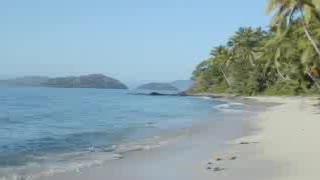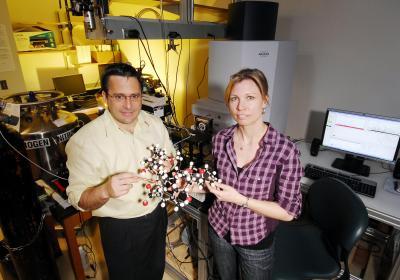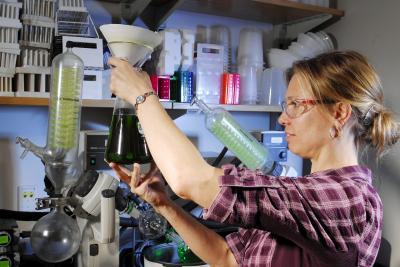Other Georgia Tech researchers have begun research on synthesizing the compound in the laboratory. Beyond producing quantities sufficient for testing, laboratory synthesis may be able to modify the compound to improve its activity – or to lessen any side effects. Ultimately, yeast or another microorganism may be able to be modified genetically to grow large amounts of bromophycolide.
The researchers found the antifungal compounds associated with light-colored patches on the surface of the Callophycus serratus seaweed using a new analytical technique known as desorption electrospray ionization mass spectrometry (DESI-MS). The technique was developed in the laboratory of Facundo Fernandez, an associate professor in Georgia Tech's School of Chemistry and Biochemistry. DESI-MS allowed researchers for the first time to study the unique chemical activity taking place on the surfaces of the seaweeds.
As part of the project, Georgia Tech scientists have been cataloging and analyzing natural compounds from more than 800 species found in the waters surrounding the Fiji Islands. They were interested in Callophycus serratus because it seemed particularly adept at fighting off microbial infections.
Using the DESI-MS technique, researchers Leonard Nyadong and Asiri Galhena analyzed samples of the seaweed and found groups of potent antifungal compounds. In laboratory testing, graduate student Amy Lane found that these bromophycolide compounds effectively inhibited the growth of Lindra thalassiae, a common marine fungus.
"The alga is marshalling its defenses and displaying them in a way that blocks the entry points for microbes that might invade and cause disease," Kubanek said. "Seaweeds don't have immune responses like humans do. But instead, they have some chemical compounds in their tissues to protect them."
Though all the seaweed they studied was from a single species, the researchers were surprised to find two distinct groups of antifungal chemicals. From one seaweed subpopulation, dubbed the "bushy" type for its appearance, 23 different antifungal compounds were identified. In a second group of seaweed, the researchers found 10 different antifungal compounds — all different from the ones seen in the first group.

Georgia Tech Researcher Julia Kubanekdiscusses studying possible antimalarial compounds found on the surfacesof a tropical seaweed harvested in the Fiji Island.
(Photo Credit: Georgia Tech Video: Inertia Films)
In the DESI-MS technique, a charged stream of polar solvent is directed at the surface of a sample under study at ambient pressure and temperature. The spray desorbs molecules, which are then ionized and delivered to the mass spectrometer for analysis.
"Our collaborative team of researchers from the Department of Biomedical Engineering and the College of Sciences has worked within the Bioimaging Mass Spectrometry Center at Georgia Tech to better understand the mechanisms of chemical defenses in marine organisms," said Fernandez. "This is an example of cross-cutting interdisciplinary research that characterizes our institute."
Kubanek is hopeful that other useful compounds will emerge from the study of signaling compounds in the coral reef community.
"In the natural world, we have seaweed that is making these molecules and we have fungi that are trying to colonize, infect and perhaps use the seaweed as a substrate for its own growth," Kubanek said. "The seaweed uses these molecules to try to prevent the fungus from doing this, so there is an interaction between the seaweed and the fungus. These molecules function like words in a language, communicating between the seaweed and the fungus."

Julia Kubanek and Facundo Fernandez, both associate professors at the Georgia Institute of Technology, hold a molecular model of a potential antimalarial drug under study.
(Photo Credit: Georgia Tech Photo: Gary Meek)

Julia Kubanek, an associate professor at the Georgia Institute of Technology, holds an extract of seaweed for study.
(Photo Credit: Georgia Tech Photo: Gary Meek)